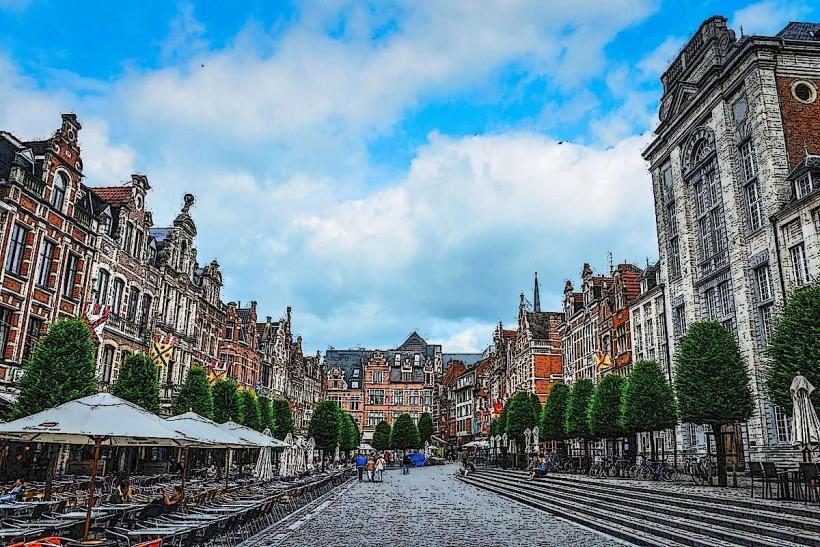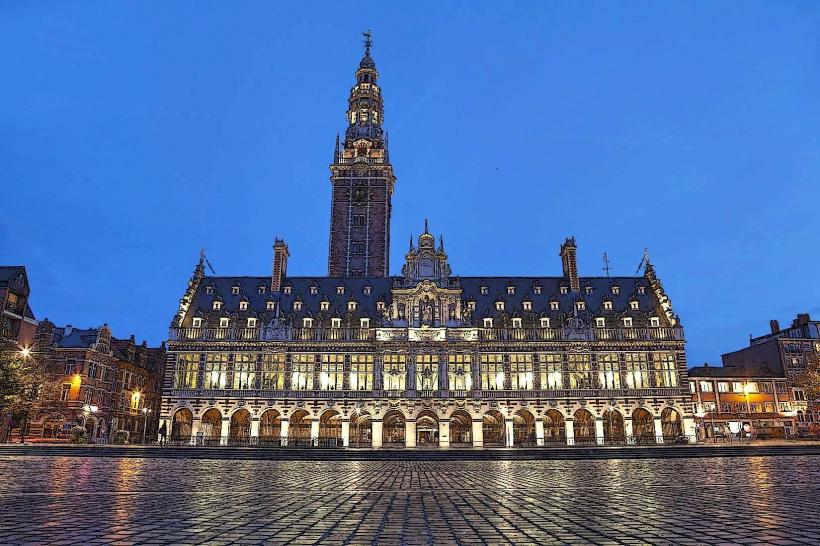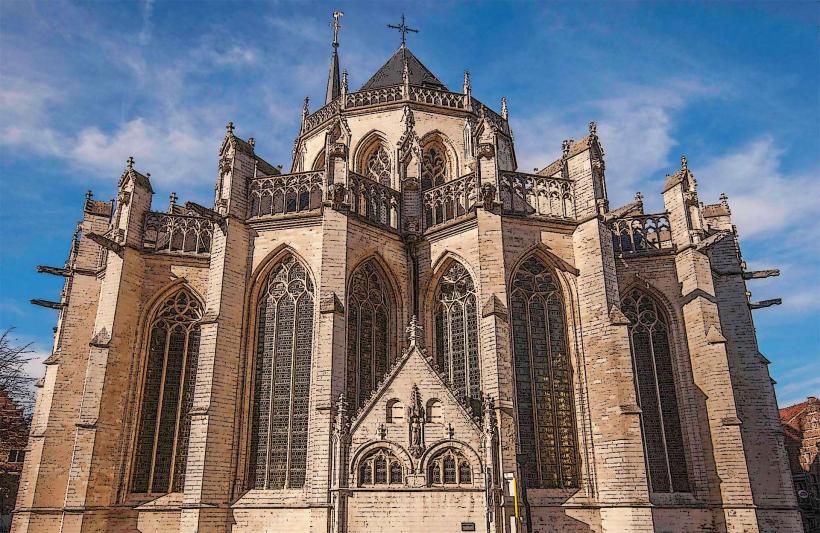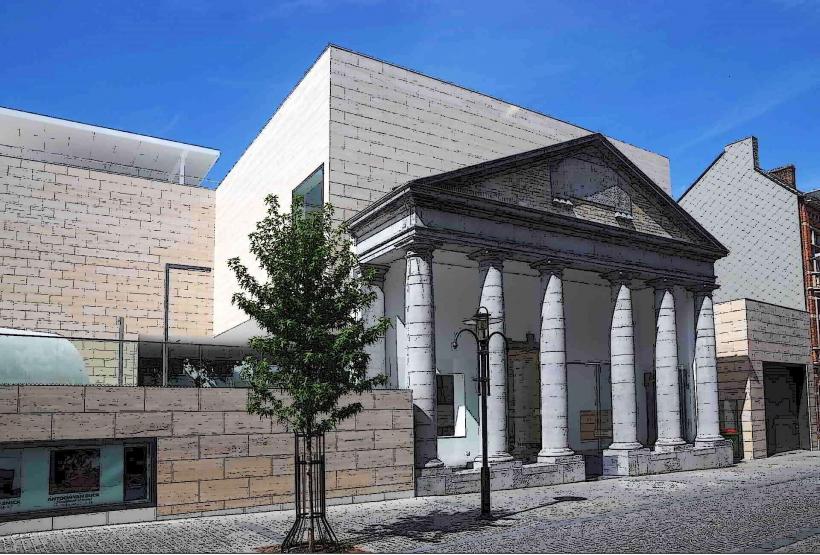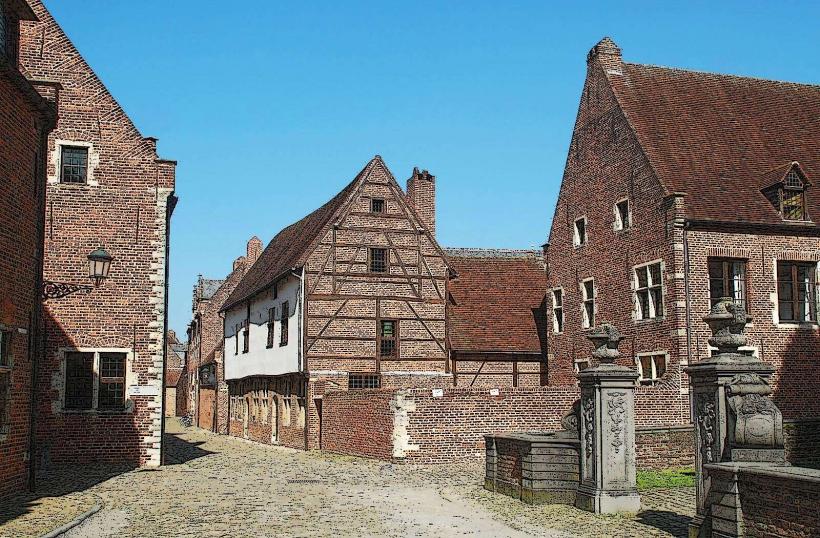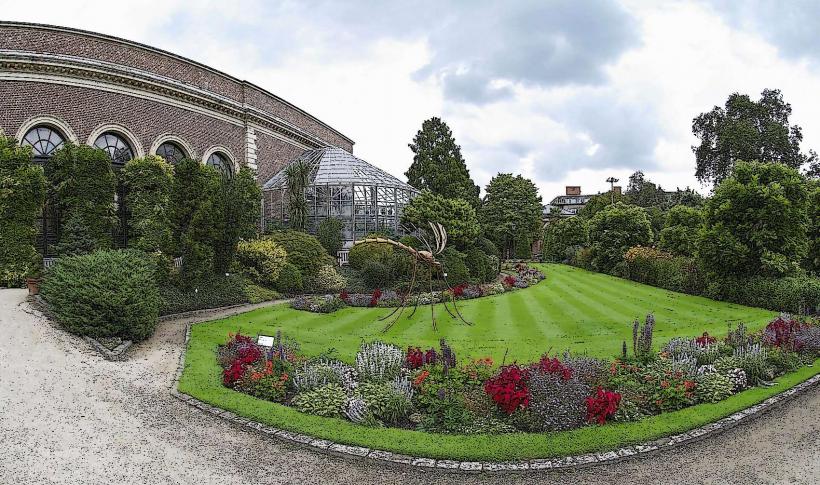Information
Landmark: Abbey of ParkCity: Leuven
Country: Belgium
Continent: Europe
The Abbey of Park (Abdij van Park) is a historic and significant site located just outside the city center of Leuven, Belgium. It is one of the most important and well-preserved monastic sites in the region, offering visitors a glimpse into the life of medieval monks, as well as an opportunity to explore beautiful grounds and learn about the site's history.
History and Origins
Founding: The Abbey of Park was founded in 1129 by Godefroid of Leuven, the son of the Duke of Brabant. It was established as a Cistercian monastery, following the strict monastic rules of the Cistercian order, which emphasized a life of prayer, work, and contemplation. The abbey's name, "Park," derives from the forest park that surrounded the site at the time, which the monks used for farming, hunting, and isolation.
Early Growth: The Abbey of Park quickly became a wealthy and powerful institution in the region, playing a significant role in both the religious and political life of Leuven. The monks of the abbey were instrumental in land reclamation and the development of the surrounding agricultural landscape. They also built a reputation for their work in areas such as theology, philosophy, and agriculture.
Medieval Prosperity: During the medieval period, the Abbey of Park was a thriving religious community. Its library was renowned for its vast collection of books, and the abbey was a center of intellectual life. The monks built extensive farmlands, milleries, and fisheries that provided resources for the abbey, and their production of goods contributed to the local economy.
Decline and Secularization: Like many other monastic institutions, the Abbey of Park experienced a decline during the French Revolution in the late 18th century, which led to the secularization of religious properties. In 1796, the abbey was dissolved by the French authorities, and its lands and buildings were confiscated. Over time, much of the abbey complex was dismantled, but several key structures, including the church and the abbey’s distinctive gatehouse, were preserved.
Architecture and Layout
Church of the Abbey: The Abbey’s church was an important part of the original complex, and although it was severely damaged during the French Revolution, parts of it still stand today. The Church of the Abbey of Park was originally built in the Romanesque style, with later additions in the Gothic and Baroque styles. The nave, arches, and vaulting are notable architectural features, reflecting the grandeur of the original structure.
Abbey Buildings: The main abbey buildings, which housed the monks, are no longer standing in their original form, but traces of the architectural layout are still visible in the surrounding park and grounds. The cloister area, where the monks lived and meditated, has been preserved in part, and remnants of medieval walls and courtyards can still be found.
Gatehouse: One of the most important and best-preserved structures of the Abbey of Park is the gatehouse (or entrance building), which still stands today. The gatehouse is a remarkable example of medieval architecture, featuring pointed arches and decorative details. It marks the entrance to the park and serves as a symbolic remnant of the grandeur the abbey once had.
Cistercian Influence: The layout and design of the abbey followed the typical principles of Cistercian architecture, with an emphasis on simplicity, functionalism, and symmetry. The Cistercians believed in living in seclusion from the outside world, so the abbey was designed with self-sufficiency in mind, with gardens, farmlands, and water sources integrated into the site.
The Park and Grounds
The Abbey Park: The Abbey Park is a green space that was once part of the monastic estate. It was used by the monks for agricultural purposes, and also served as a place for prayer, contemplation, and walking. The park is still a key feature of the site, offering visitors a chance to explore the natural beauty of the area while learning about its history.
Botanical Garden: The grounds around the abbey contain a botanical garden, which showcases a variety of plants, including medicinal herbs, flowering plants, and species traditionally cultivated by the monks. The gardens have been restored and are now an integral part of the visitor experience, providing a peaceful and educational space to explore.
Canal: The Abbey of Park was originally located near a network of canals, which the monks used for water management and farming. Today, these canals still run through the park, adding to the scenic beauty of the area and providing an insight into the abbey's historical importance in water management and agriculture.
Current Use
Cultural Center and Events: Today, the Abbey of Park is used for a variety of cultural and community events. The site hosts exhibitions, musical performances, and historical tours. It is also a popular venue for conferences and other educational activities related to the arts, culture, and history.
Visitor Experience: Visitors can explore the Abbey Park, which remains a tranquil space for relaxation and contemplation. The gatehouse and other remnants of the abbey are accessible to the public, and the botanical gardens are a particularly popular spot for nature lovers. There are also several walking paths throughout the grounds, allowing visitors to explore the natural beauty of the park.
Restoration Projects: Over the years, the Abbey of Park has undergone several restoration projects to preserve its historical and architectural significance. The ongoing efforts focus on preserving the gatehouse, the botanical gardens, and the landscape of the abbey, ensuring that it remains a valuable cultural and historical site for future generations.
Location and Accessibility
Address: The Abbey of Park is located just outside the center of Leuven at Abdij van Park 7, 3001 Leuven, Belgium. It is easily accessible from the city center by foot, bike, or public transport.
Public Transport: The site is well-served by local buses and trams, and it is within walking distance from Leuven's main attractions. The proximity to the city center makes it an ideal spot for a peaceful retreat while being close to the vibrant cultural life of Leuven.
Opening Hours: The Abbey of Park is generally open to the public throughout the year, although the opening hours may vary depending on the season or ongoing events. It is advisable to check for the latest details on opening hours before planning a visit.
Conclusion
The Abbey of Park is a remarkable historical site that offers visitors a unique opportunity to explore the legacy of the Cistercian monks who once lived there. From its founding in the 12th century to its secularization in the 18th century, the abbey played an important role in the religious, agricultural, and cultural life of Leuven. Today, the site offers a peaceful and picturesque retreat, with its beautifully restored gatehouse, tranquil park, and botanical gardens. Whether you are interested in history, architecture, or simply seeking a calm place to relax, the Abbey of Park is a must-visit destination in Leuven.


